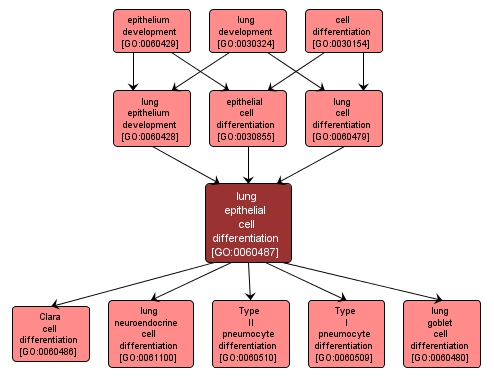GO TERM SUMMARY
|
| Name: |
lung epithelial cell differentiation |
| Acc: |
GO:0060487 |
| Aspect: |
Biological Process |
| Desc: |
The process whereby a relatively unspecialized cell acquires specialized features of an epithelial cell that contributes to the epithelium of the lung. |
Synonyms:
- pulmonary epithelial cell differentiation
|
|

|
INTERACTIVE GO GRAPH
|














